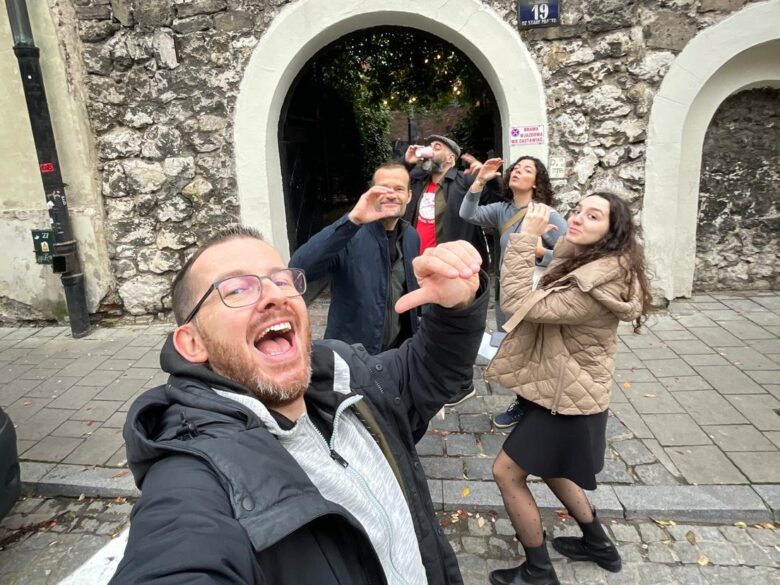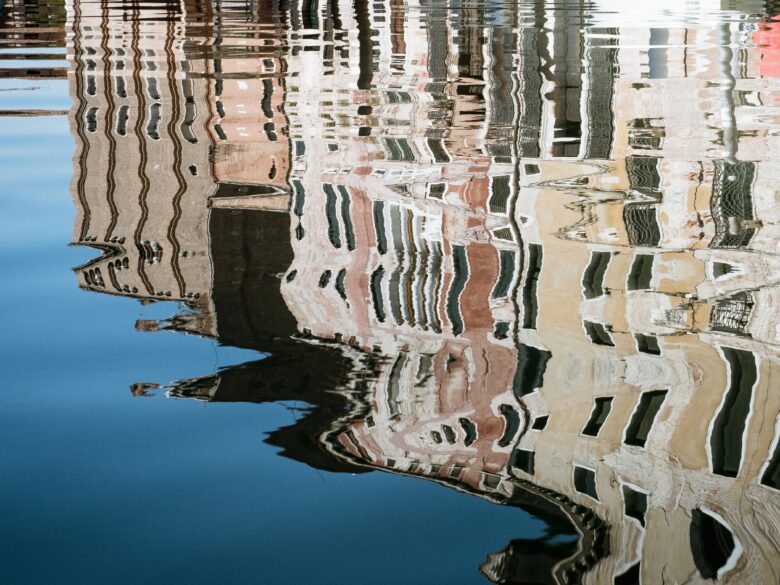Jo Nightingale
Today an interview with Jo Nightingale, Spotter for our Manchester Cityblog.
Can you tell us a bit about yourself?
I was born in South Manchester and have lived in the area all my life, although I only moved into the city centre two years ago after finally realising I didn’t need to do all that travelling! I’ve worked in communications for about 14 years, from web editing to PR, internal comms and marketing, and now work freelance as a consultant and copywriter. I also write features about the arts, lifestyle and Manchester itself for local publications and websites.
I’m a bit of a culture-obsessive and particularly love seeing films, art exhibitions and live bands. I’m really lucky to live only a block away from our arthouse cinema and gallery, Cornerhouse, and no more than 15 minutes’ walk from any Manchester music venue – I also love eating out and trying out new bars so I end up going out a lot more than I should!
Why Manchester? What is a must do when you visiting Manchester? What is not?
I’ve already mentioned my love of films and music, and Cornerhouse and our huge range of venues are two of Manchester’s big attractions for me. Deaf Institute, Ruby Lounge and Sound Control are three of my favourite places for gigs; all of them also have good bar areas and a relaxed, off-beat feel. The city’s history and Victorian architecture are another huge draw – we may not get many blue skies but there’s still plenty of reason to look up wherever you go in this city.
And if you know where to look there are some really interesting independent shops, mostly in the Northern Quarter, where a lot of the best quirky bars can also be found. So don’t spend all day in the chain stores or linger too long over your dinner – the city has a lot more to offer.
Which prejudices about Manchester are true? Which ones are not?
It doesn’t actually rain all the time in Manchester, but we do have a heck of a lot of cloud, so it’s certainly true that people don’t come here to sun-bathe. That said the cloud seems to keep the heat in and the city is pretty mild compared with surrounding areas. Until the 90’s Manchester had a reputation for grim surroundings and dour people but that’s certainly not true today; the landscape has been totally over-hauled since the 1996 IRA bomb gave its regeneration a boost, and the once soot-covered warehouses and civic gems can now be seen in all their glory. And it’s one of the friendliest and most positive cities I know – perhaps helped these days by its cosmopolitan population and a mood of excitement about everything that’s happening here.
What do you know about Manchester what no tourist will know?
Ancoats, just beyond the Northern Quarter across Great Ancoats Street, was the world’s first industrial suburb, and once housed around 54,000 workers. Almost all the (often slum) Victorian housing has now gone, although some of the city centre’s few houses remain, but there are still many mills, warehouses and other buildings of interest including the Art Deco Daily Express building. The area’s been regenerated over the last decade or two but much of that’s been stalled by the financial downturn and Ancoats has still not been integrated into the modern city centre, but it’s relative isolation makes it a fascinating place to wander and get a rounded impression of the city’s roots. Some photos I took last summer will give you a flavour.
Can you describe a perfect day in your city? Which spots would you visit?
Time and weather permitting, I’d start the day by wandering one of Manchester’s largely-hidden canals, from the famous ‘gay village’ along Canal Street to regenerated industrial hub Castlefield. Along the way you’ll see some great examples of Victorian warehousing adapted for modern use, from flats and offices to bars and restaurants. If you’re new to the city pop into the Museum of Science and Industry (MOSI), home of the world’s first passenger railway station, and let the Revolution Manchester gallery give you a potted history, before jumping on a tram from Deansgate/Manchester Central station to St Peter’s Square.
Of all the city’s Victorian gems Waterhouse’s Manchester Town Hall (second photograph) shouldn’t be missed. You may not have time to do all of nearby Manchester Art Gallery but pop into its renowned Pre-Raphaelite rooms, before crossing Piccadilly Gardens into the just-regenerated-enough former garment district, the Northern Quarter. Essential shopping stops are Afflecks (pictured below) and the Craft & Design Centre but try and find time for vintage havens Retro Rehab and Pop Boutique, present-buyer’s paradise Oklahoma, and Rockers England and Thunderegg for retro-inspired clothes and gifts.
By now I’d probably need an energy boost and head to shabby-chic tea-room Sugar Junction, or nearby Port Street Beer House for something (much) stronger. The Stevenson Square area is one of my favourite parts of town as it has some of the best low-key cafes and bars and a smattering of shops and galleries, but is still unpolished enough to feel like the real Manchester. Crossing Piccadilly again, China Town is a good bet for dinner: Little Yang Sing is my favourite Chinese restaurant or you could Try Thai (both places are great for veggies as well as meat-eaters).
If the night’s still young when you leave head south down Oxford Road into the university area, where Sandbar offers more real ale and atmosphere. Its opposite neighbour is The Deaf Institute so I’d always try to make time to go there too – if there isn’t a gig on upstairs just go and look at the wallpaper. If the rain holds off and your beer scooter’s revved-up finish the evening by heading just a little further south to look at The University of Manchester, whose main buildings were again designed by Waterhouse and are some of the city’s grandest.
Is there something else you want to share?
You do still see quite a few ‘Manchester haircuts’ on gentlemen of a certain age, but most of the city has moved on musically since the late 80’s. Resident bands to check out these days include Plank!, Gnod, WU LYF, The Ting Tings, Dutch Uncles and Schmoo; an honourable mention must also go to The Charlatans, still going strong, and their singer Tim Burgess who’s hugely active in producing and showcasing new music. See http://bagthing.co.uk or Manchester what’s on guide Chimp for listings.
Check out all articles by Jo Nightingale and the other Spotter interviews.

![10 Unique Flea Markets in Europe [2024 Update!]](https://www.spottedbylocals.com/wp-content/uploads/midnightbazar-munich-by-ayla-amschlinger.jpg)




